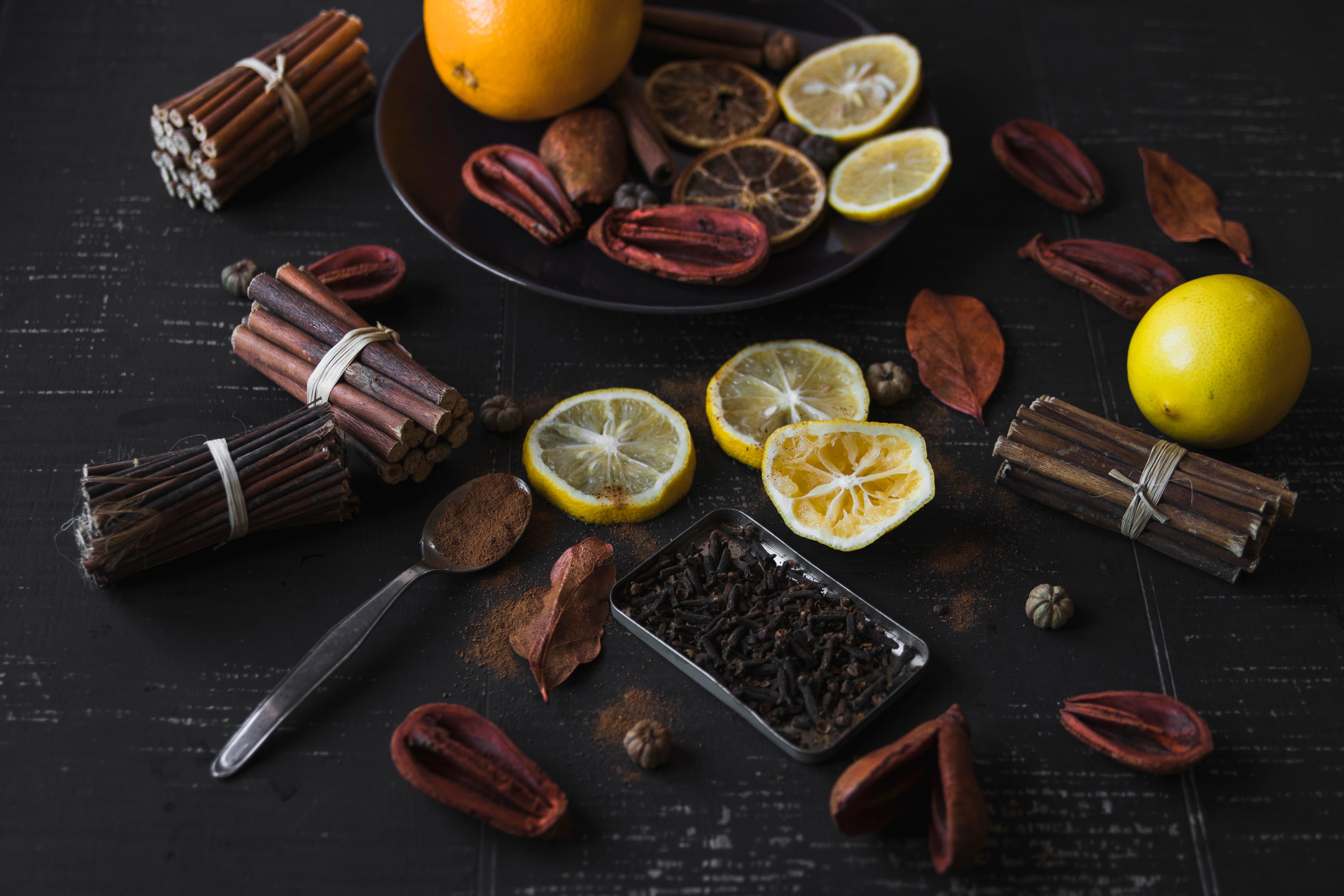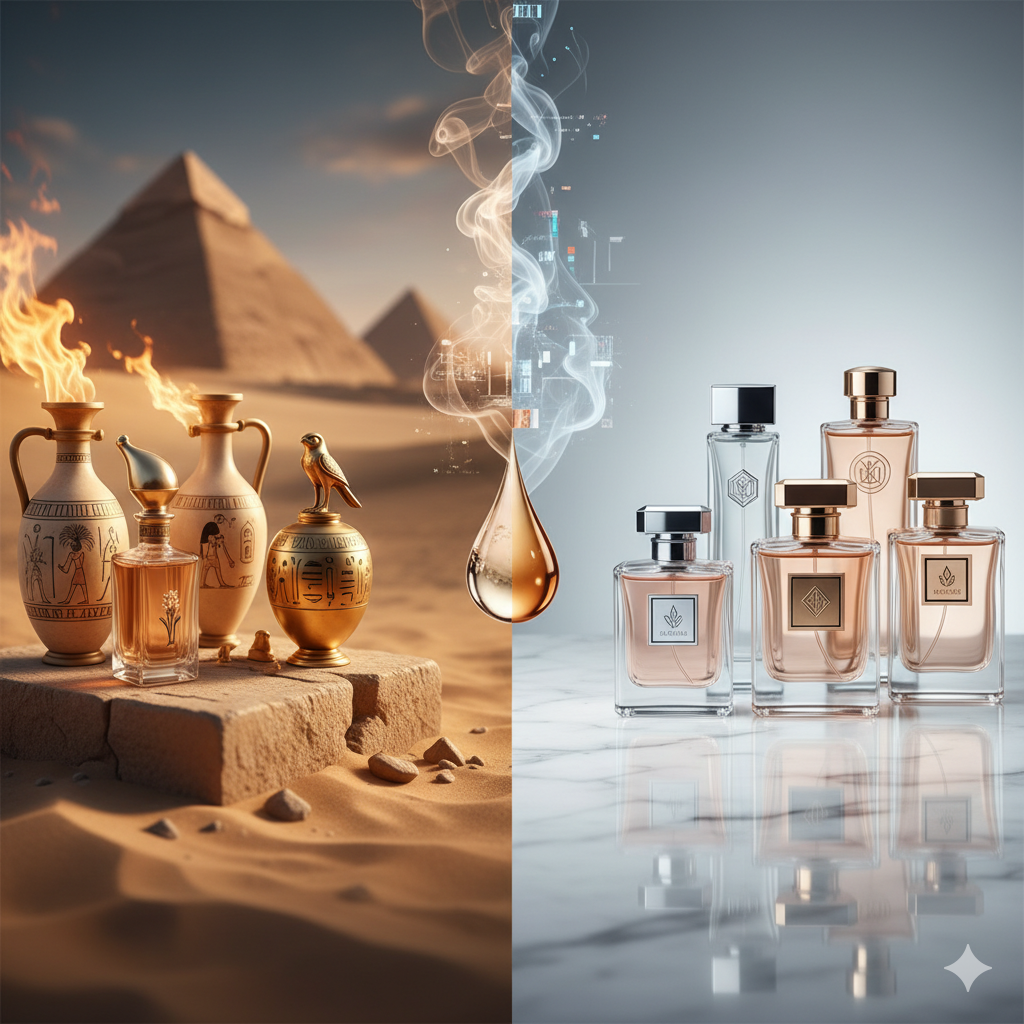The Ultimate Guide to Fragrance Families and Their Personality Match: Discover Your Signature Scent
Understanding Perfume Families: A Complete Fragrance Classification Guide
Choosing the perfect perfume can feel overwhelming with thousands of fragrances available in the market. Understanding perfume families and fragrance categories is the key to discovering scents that truly reflect your personality and style. This comprehensive guide explores all major perfume family types, their chemical compositions, and how to match fragrances with your unique character traits.
What Are Perfume Families? The Science Behind Fragrance Classification
Perfume families are the fundamental fragrance classification system used by perfumers worldwide to categorize scents based on their dominant olfactory characteristics. Developed by fragrance experts and refined over centuries, this fragrance wheel system groups perfumes into distinct categories based on their aromatic compounds and molecular structures.
The modern fragrance family classification helps both perfume creators and consumers understand scent profiles, predict how fragrances will smell, and identify personal preferences. Each perfume category contains specific aroma chemicals and natural extracts that create signature scent characteristics.
The 6 Main Perfume Families Explained in Detail
1. Floral Perfume Family: Romantic and Timeless Fragrances
Floral fragrances represent the largest and most popular perfume family, accounting for over 30% of all perfumes sold globally. These flower-based perfumes range from single-note floral scents to complex multi-floral compositions.
Key Chemical Compounds in Floral Perfumes:
- Phenylethyl alcohol (C₈H₁₀O): Primary component of rose essence, providing sweet, rosy notes
- Linalool (C₁₀H₁₈O): Found in lavender and coriander, offering fresh floral characteristics
- Geraniol (C₁₀H₁₈O): Extracted from geranium and rose, contributing honey-like floral sweetness
- Benzyl acetate (C₉H₁₀O₂): Present in jasmine, creating intense white floral notes
- Indole (C₈H₇N): Found in jasmine and orange blossom, adding depth and sensuality
Floral Perfume Subcategories:
- Soliflore fragrances: Single flower perfumes (pure rose, jasmine, tuberose)
- Floral bouquet perfumes: Multi-flower compositions combining several floral notes
- Fresh floral scents: Light, airy florals with citrus or green notes
- Soft floral fragrances: Powdery, aldehydic florals with musky undertones
Personality Match for Floral Perfume Lovers:
If you gravitate toward floral perfumes, you likely possess romantic, feminine, and optimistic personality traits. Floral fragrance enthusiasts tend to be nurturing, creative, and emotionally expressive individuals who appreciate beauty and tradition.
Popular Floral Perfume Ingredients: Rose absolute, jasmine sambac, tuberose, lily of the valley (hydroxycitronellal C₁₀H₂₀O₂), orange blossom, peony, gardenia
2. Oriental Perfume Family: Warm, Spicy, and Exotic Fragrances
Oriental perfumes (also called amber fragrances) are characterized by warm, sensual, and opulent scent profiles. These exotic perfumes feature rich, heavy notes derived from resins, spices, and animal-derived ingredients or their synthetic equivalents.
Key Chemical Compounds in Oriental Perfumes:
- Vanillin (C₈H₈O₃): Primary vanilla component, providing sweet, creamy warmth
- Eugenol (C₁₀H₁₂O₂): Found in clove and cinnamon, offering spicy, warm notes
- Coumarin (C₉H₆O₂): Extracted from tonka beans, creating sweet, hay-like aroma
- Isoeugenol (C₁₀H₁₂O₂): Present in nutmeg and ylang-ylang, adding spicy depth
- Cinnamaldehyde (C₉H₈O): Cinnamon's active compound, providing hot, spicy character
Oriental Perfume Subcategories:
- Soft oriental fragrances: Powdery, incense-based with floral touches
- Spicy oriental perfumes: Dominated by cinnamon, clove, and pepper notes
- Woody oriental scents: Combining oriental warmth with sandalwood and oud
- Floriental perfumes: Floral-oriental hybrids balancing flowers with spices
Personality Match for Oriental Perfume Enthusiasts:
Oriental fragrance lovers typically exhibit confident, mysterious, and passionate personality traits. These individuals often possess strong presence, appreciate luxury, and aren't afraid to stand out. Oriental perfume wearers tend to be evening-oriented, sophisticated, and sensual.
Popular Oriental Perfume Ingredients: Vanilla (vanillin), amber accord, frankincense (α-pinene C₁₀H₁₆), myrrh, benzoin resin (benzoic acid C₇H₆O₂), patchouli (patchoulol C₁₅H₂₆O), cinnamon, clove
3. Woody Perfume Family: Earthy, Warm, and Sophisticated Fragrances
Woody perfumes showcase dry, warm, and often mysterious characteristics derived from tree bark, roots, moss, and resinous materials. These wood-based fragrances are popular in both masculine and unisex perfumery.
Key Chemical Compounds in Woody Perfumes:
- Santalol (C₁₅H₂₄O): Primary component of sandalwood oil, providing creamy, milky wood notes
- Cedrol (C₁₅H₂₆O): Extracted from cedarwood, offering dry, pencil-shaving characteristics
- Patchoulol (C₁₅H₂₆O): Main constituent of patchouli, creating earthy, camphorous notes
- Vetiverol (C₁₅H₂₄O): Found in vetiver roots, providing smoky, green-woody aspects
- Iso E Super (C₁₆H₂₆O): Synthetic woody molecule, creating velvety, cedar-like notes
Woody Perfume Subcategories:
- Dry woods fragrances: Featuring cedar, vetiver, and cypress notes
- Aromatic woody perfumes: Combining woods with herbs like lavender and rosemary
- Mossy woods scents: Traditional chypre structures with oakmoss (evernic acid C₁₇H₁₆O₇)
- Creamy woods perfumes: Sandalwood-dominant with smooth, milky characteristics
Personality Match for Woody Perfume Wearers:
Those drawn to woody fragrances often display grounded, reliable, and introspective personality traits. Woody perfume enthusiasts tend to be intelligent, nature-loving individuals who value authenticity and depth. These personalities appreciate minimalism, quality over quantity, and timeless elegance.
Popular Woody Perfume Ingredients: Sandalwood, cedarwood (cedrol), vetiver, patchouli, oud/agarwood (sesquiterpenes), oakmoss, cypress, guaiac wood (guaiol C₁₅H₂₆O)
4. Fresh Perfume Family: Clean, Light, and Energizing Fragrances
Fresh perfumes encompass clean, light, and revitalizing scent profiles that evoke water, citrus, greenery, and oceanic elements. These refreshing fragrances are perfect for daytime wear and warm weather.
Key Chemical Compounds in Fresh Perfumes:
- Limonene (C₁₀H₁₆): Dominant in citrus oils, providing fresh, lemony brightness
- Citral (C₁₀H₁₆O): Found in lemongrass and citrus peel, creating intense lemon notes
- Calone (C₁₁H₁₆O₂): Synthetic melon-marine molecule, evoking oceanic freshness
- Hexyl acetate (C₈H₁₆O₂): Present in apples and pears, offering fruity-green notes
- Leaf alcohol (C₆H₁₂O): Creates fresh-cut grass and green leaf impressions
Fresh Perfume Subcategories:
- Citrus fragrances: Featuring lemon, bergamot, orange, and grapefruit notes
- Green perfumes: Showcasing crushed leaves, grass, and stems (leaf aldehydes)
- Aquatic scents: Marine and water-inspired fragrances with calone
- Fruity fresh perfumes: Light fruit notes combined with citrus and greenery
Personality Match for Fresh Fragrance Lovers:
Fresh perfume enthusiasts typically exhibit energetic, optimistic, and active personality traits. These individuals often lead healthy lifestyles, enjoy outdoor activities, and maintain positive outlooks. Fresh fragrance wearers tend to be youthful, sociable, and approachable.
Popular Fresh Perfume Ingredients: Bergamot (limonene, linalyl acetate C₁₂H₂₀O₂), lemon, grapefruit, mint (menthol C₁₀H₂₀O), cucumber, green tea, marine notes (calone), watermelon
5. Gourmand Perfume Family: Sweet, Edible, and Comforting Fragrances
Gourmand perfumes represent a modern fragrance family featuring edible, dessert-like notes that evoke comfort and indulgence. These food-inspired fragrances emerged in the 1990s and have gained massive popularity, especially among younger demographics.
Key Chemical Compounds in Gourmand Perfumes:
- Ethyl maltol (C₇H₈O₃): Creates cotton candy and caramelized sugar notes
- Vanillin (C₈H₈O₃): Provides vanilla sweetness and creamy depth
- Coumarin (C₉H₆O₂): Offers tonka bean and almond-like sweetness
- Furaneol (C₆H₈O₃): Found in strawberries, creating jammy fruit notes
- Helional (C₁₃H₁₆O₃): Synthetic molecule providing melon and watery sweetness
Gourmand Perfume Subcategories:
- Vanilla gourmands: Vanilla-dominant with caramel and sugar notes
- Chocolate perfumes: Featuring cacao absolute and sweet praline notes
- Coffee fragrances: Showcasing roasted coffee bean and bitter-sweet characteristics
- Fruity gourmands: Combining berries and fruits with cream and sugar
Personality Match for Gourmand Perfume Enthusiasts:
Those who prefer gourmand fragrances often possess warm, playful, and comfort-seeking personality traits. Gourmand perfume lovers tend to be nostalgic, affectionate individuals who value cozy environments and sweet experiences. These personalities are typically approachable, fun-loving, and empathetic.
Popular Gourmand Perfume Ingredients: Vanilla, tonka bean, caramel (ethyl maltol), chocolate, coffee, honey, almond (benzaldehyde C₇H₆O), praline, cotton candy, whipped cream notes
6. Chypre Perfume Family: Sophisticated, Complex, and Mossy Fragrances
Chypre perfumes represent a classic fragrance family characterized by a sophisticated structure combining citrus top notes, floral or fruity heart notes, and mossy-woody base notes. Named after the French word for Cyprus, these sophisticated perfumes offer complexity and elegance.
Key Chemical Compounds in Chypre Perfumes:
- Evernic acid (C₁₇H₁₆O₇): Main component of oakmoss, providing earthy-mossy notes
- Bergamot oil (limonene, linalyl acetate): Creates bright, citrusy opening
- Labdanum absolute (labdanic acid C₂₀H₃₂O₄): Provides amber-like, leathery depth
- Patchoulol (C₁₅H₂₆O): Adds earthy, woody complexity
- Rose oxide (C₁₀H₁₈O): Contributes metallic, fresh-rosy facets
Chypre Perfume Subcategories:
- Classic chypre fragrances: Traditional oakmoss-labdanum-bergamot structure
- Fruity chypre perfumes: Adding peach, blackcurrant, or berry notes
- Floral chypre scents: Emphasizing rose, jasmine, or ylang-ylang
- Leather chypre fragrances: Incorporating birch tar and leather notes
Personality Match for Chypre Perfume Admirers:
Chypre fragrance lovers typically display refined, intellectual, and enigmatic personality traits. These individuals often appreciate art, culture, and timeless elegance. Chypre perfume wearers tend to be independent thinkers, sophisticated, and confident in their unique style choices.
Popular Chypre Perfume Ingredients: Oakmoss (restricted due to regulations), bergamot, labdanum, patchouli, rose, jasmine, peach, blackcurrant bud (buchu oil)
How to Choose Your Perfect Perfume Family Based on Personality
Matching Fragrance Families with Character Traits
For the Romantic Dreamer:
Best perfume families: Floral, Soft Oriental, Floriental These feminine fragrances complement nurturing, creative, and emotionally expressive personalities. Look for rose, jasmine, and soft amber combinations.
For the Bold Adventurer:
Best perfume families: Spicy Oriental, Woody Oriental, Leather Chypre Strong perfumes with confident projection suit adventurous, passionate, and dynamic personalities. Seek out oud, spices, and bold amber accords.
For the Nature Lover:
Best perfume families: Woody, Green Fresh, Aromatic Natural fragrances with earthy and green notes appeal to grounded, eco-conscious, and introspective individuals. Choose vetiver, cedar, and green leaf notes.
For the Energetic Optimist:
Best perfume families: Citrus Fresh, Fruity Fresh, Aquatic Uplifting perfumes with bright, clean characteristics match active, positive, and sociable personalities. Look for bergamot, grapefruit, and marine accords.
For the Cozy Homebody:
Best perfume families: Gourmand, Vanilla Oriental, Soft Floral Comforting fragrances with sweet, warm notes suit nostalgic, affectionate, and comfort-seeking individuals. Seek vanilla, tonka bean, and caramel notes.
For the Sophisticated Intellectual:
Best perfume families: Chypre, Woody, Aromatic Fougère Complex perfumes with layered compositions appeal to refined, cultured, and independent personalities. Choose oakmoss, patchouli, and sophisticated blends.
Understanding Perfume Concentration Levels Within Fragrance Families
Perfume vs Eau de Parfum vs Eau de Toilette
Regardless of perfume family, fragrances come in different concentration levels affecting longevity and intensity:
- Parfum/Extrait (20-30% concentration): Lasts 8-12 hours, strongest intensity
- Eau de Parfum (15-20% concentration): Lasts 6-8 hours, ideal for daily wear
- Eau de Toilette (5-15% concentration): Lasts 3-5 hours, lighter application
- Eau de Cologne (2-4% concentration): Lasts 2-3 hours, refreshing splash
- Eau Fraîche (1-3% concentration): Lasts 1-2 hours, subtle freshness
Seasonal Fragrance Family Guide: What to Wear When
Spring Perfumes:
Best families: Fresh Floral, Green, Light Citrus Spring calls for light perfumes with blooming flowers and fresh greenery. Choose hyacinth, freesia, lily of the valley, and dewy green notes.
Summer Perfumes:
Best families: Citrus, Aquatic, Fruity Fresh Summer demands refreshing fragrances that won't overwhelm in heat. Opt for bergamot, watermelon, coconut, and marine accords.
Fall Perfumes:
Best families: Woody, Spicy Oriental, Chypre Autumn invites warm perfumes with depth and richness. Select patchouli, cinnamon, oakmoss, and dried fruits.
Winter Perfumes:
Best families: Oriental, Gourmand, Woody Oriental Winter welcomes rich fragrances with heavy, cozy characteristics. Choose vanilla, amber, oud, and sweet spices.
Niche vs Designer Perfume Families: Understanding the Difference
Designer Perfumes:
Created by fashion houses and mainstream brands, designer fragrances within each perfume family tend to be more accessible, widely marketed, and formulated for mass appeal. They often use synthetic aroma chemicals alongside natural extracts to achieve consistency and affordability.
Niche Perfumes:
Artisanal fragrances from independent perfume houses offer unique interpretations of perfume families with higher concentrations of natural ingredients, unusual combinations, and artistic expression. These exclusive perfumes often push boundaries within traditional family structures.
Layering Fragrances Across Different Perfume Families
Perfume layering allows you to create custom scent combinations by mixing fragrances from complementary families:
Successful Layering Combinations:
- Floral + Woody: Rose with sandalwood creates sophisticated femininity
- Fresh + Oriental: Citrus with vanilla adds brightness to warmth
- Gourmand + Fresh: Vanilla with bergamot prevents cloying sweetness
- Woody + Fresh: Vetiver with grapefruit offers modern masculinity
- Floral + Gourmand: Jasmine with caramel creates indulgent florals
Layering Tips:
Apply the heavier, longer-lasting fragrance first as your base, then add lighter notes on pulse points. Start with one spray of each and adjust based on intensity preferences.
Common Perfume Family Misconceptions Debunked
Myth 1: "Perfume families are gender-specific"
Truth: Modern perfumery embraces unisex fragrances across all families. Woody, fresh, and oriental notes work beautifully regardless of gender.
Myth 2: "You should stick to one perfume family"
Truth: Your fragrance wardrobe can include multiple families for different moods, occasions, and seasons.
Myth 3: "Floral perfumes are old-fashioned"
Truth: Contemporary modern florals incorporate unexpected notes like coffee, leather, and spices for innovative interpretations.
Myth 4: "Gourmand perfumes are only for young people"
Truth: Sophisticated gourmands with complex structures appeal to all age groups when balanced properly.
How to Test Perfumes to Find Your Perfect Family
Professional Fragrance Testing Method:
- Test on skin, not paper: Perfumes interact with your unique skin chemistry, altering scent development
- Limit testing to 3-4 fragrances: Olfactory fatigue prevents accurate assessment beyond this number
- Wait 30 minutes: Allow the top notes to evaporate and reveal the heart notes
- Evaluate after 4-6 hours: Test the base notes and longevity on your skin
- Test in different temperatures: Heat affects scent projection and perception
Identifying Your Dominant Perfume Family Preference:
Sample fragrances from each family systematically, noting which scent profiles make you feel most confident and comfortable. Your emotional response indicates personality alignment.
Caring for Your Perfume Collection Across Families
Proper Perfume Storage:
- Keep bottles away from direct sunlight (UV rays break down fragrance molecules)
- Store in cool, dry places (ideal temperature: 15-20°C/59-68°F)
- Maintain original packaging for maximum protection
- Avoid bathroom storage due to humidity and temperature fluctuations
- Keep bottles sealed when not in use to prevent oxidation
Perfume Shelf Life by Family:
- Citrus/Fresh perfumes: 1-2 years (volatile compounds evaporate quickly)
- Floral fragrances: 2-3 years (moderate stability)
- Woody/Oriental perfumes: 3-5+ years (stable, often improve with age)
- Gourmand perfumes: 2-4 years (synthetic molecules generally stable)
Building Your Signature Scent Wardrobe
Essential Perfume Family Collection:
The Minimalist Collection (3 fragrances):
- One fresh/citrus for daytime and summer
- One floral or woody for versatility
- One oriental or gourmand for evenings and winter
The Complete Collection (6+ fragrances): Include at least one representative from each major family, allowing flexibility for any occasion, season, or mood.
The Future of Perfume Families: Emerging Trends
Hybrid Fragrance Families:
Modern innovative perfumes increasingly blur traditional family boundaries, creating new categories:
- Woody Gourmands: Combining sandalwood with caramel and vanilla
- Fresh Orientals: Merging citrus brightness with warm spices
- Green Florals: Emphasizing stems and leaves over blooms
- Mineral Fragrances: Featuring aldehydes and metallic notes
Sustainable and Natural Perfumery:
Growing demand for eco-friendly fragrances using ethical sourcing, biodegradable formulas, and natural extraction methods is reshaping how perfume families are constructed.
Molecular Perfumery:
Synthetic aroma chemicals like Iso E Super, Ambrox™ (ambrinol C₁₆H₂₈O), and Molecule 01 create minimalist scents that challenge traditional family classifications.
Conclusion: Discovering Your Fragrance Identity
Understanding perfume families empowers you to make informed fragrance choices that truly reflect your personality and preferences. Whether you're drawn to romantic florals, exotic orientals, sophisticated chypres, or comforting gourmands, there's a perfect scent family waiting to become your signature.
Start your fragrance journey by sampling different perfume categories, paying attention to which notes resonate with your emotions and lifestyle. Remember that your perfect perfume isn't just about pleasant smells—it's an invisible expression of your unique identity.
Explore multiple families, experiment with layering, and don't be afraid to step outside your comfort zone. Your ideal fragrance might surprise you, existing in a family you've never considered before.
Frequently Asked Questions About Perfume Families
Q: Can I wear different perfume families for different occasions? A: Absolutely! Building a diverse fragrance wardrobe with multiple families allows you to match your scent to your mood, outfit, and setting.
Q: How do I know which perfume family suits my skin chemistry? A: Test fragrances on your pulse points and evaluate after several hours. Your skin's pH, moisture level, and natural oils interact differently with each scent family.
Q: Are expensive perfumes better within each family? A: Price doesn't always indicate quality. Higher prices often reflect ingredient rarity, brand prestige, and packaging rather than superior scent within perfume families.
Q: What's the difference between natural and synthetic ingredients in perfume families? A: Natural ingredients come from botanical sources, while synthetics are laboratory-created molecules. Both have advantages: naturals offer complexity, synthetics provide consistency and access to impossible-to-harvest scents.
Q: How many perfumes should I own from different families? A: There's no rule, but 3-6 fragrances covering different families, seasons, and occasions provides versatility without overwhelming your collection.
Ready to discover your signature scent? Explore our curated collection of perfumes from every fragrance family and find the perfect match for your unique personality today!







